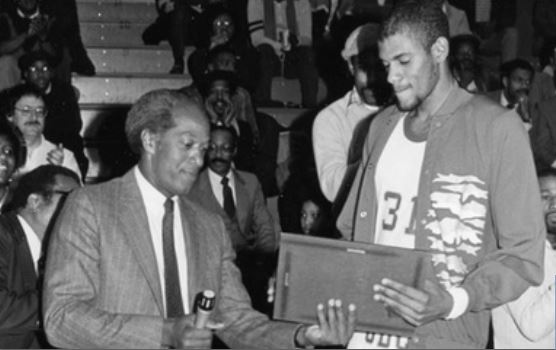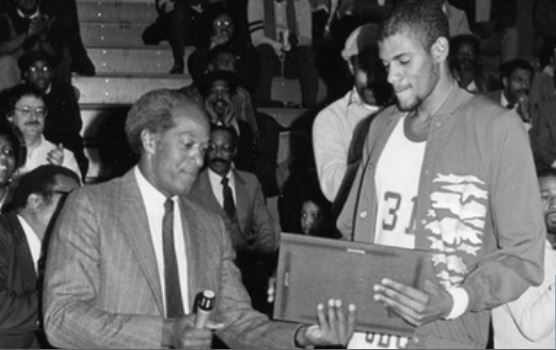[ad_1]
By MARK F. GRAY, Special to the AFRO
It was the best of times and the worst of times during the early 1980s when Earl Jones stepped onto the campus of the University of the District of Columbia (UDC). With a crack epidemic spreading and unemployment rampant, go-go music kept the DMV pumped while the burgundy and gold was taking its place amongst the NFL’s elite. America was just beginning to appreciate the quality of college basketball being played in this area.

Despite the long shadow being cast by coach John Thompson and his program-changing recruit Patrick Ewing at Georgetown, UDC landed an iconic game changer of its own. Jones became a D.C. basketball icon by leading them to the 1982 NCAA Division II national championship and a runner up finish in 1983. He will join three other HBCU greats – Marvin Webster (Morgan State), Len “Truck” Robinson (Tennessee St.) and Charles Oakley of (Virginia Union) – as part of the third induction class of the Small College Basketball Hall of Fame on Nov. 2 in St. Joseph’s, Missouri.
Jones was to the UDC program what Ewing was to the Georgetown program. He changed the expectations of the team and gave them a reason to believe they could compete for a national championship. Unlike Ewing, however, he had become a local icon before stepping on campus after becoming a street legend while playing for Spingarn High.
Segregation forced most Black high school students in the District to attend Spingarn for more than six decades. The “Green Wave” sent countless players to college programs including two that were members of the league’s top 50 players in its first half-century which were Basketball Hall of Famers Elgin Baylor and Dave Bing.
When Jones arrived from West Virginia he was immediately under a microscope having to deal with eligibility questions about where he lived and whether he could play for Spingarn. He reportedly had 63 unexcused absences and struggled to make the 2.0 GPA to remain academically eligible at Mt. Hope High School before leaving his home state. His dominance was unquestionable though. Jones led them to 63 victories in 72 games following a 3-18 season the year before he started playing there. At 6’11” 215 pounds, he drew comparisons to Ralph Sampson and Kareem Abdul-Jabbar with some daring to proclaim he was better.
The Washington Inter-High Coaches Association did their best to abort the legend of Jones before it was born. After relocating to D.C. to play AAU Basketball since there were no teams in his hometown, the WICA (now DCIAA), initially ruled him ineligible to compete because of academic compliance issues in West Virginia. However, a court injunction intervened allowing his legend’s birth.
Jones led them to a city championship averaging 20 points and 17 rebounds per game and led Spingarn to a 26-2 record and a league title 29 points in a 79-68 victory over DeMatha for the city championship. Most analysts and experts thought he was destined to play at a major college program- and now all these years later, his work in college is being honored.
[ad_2]
Source link

